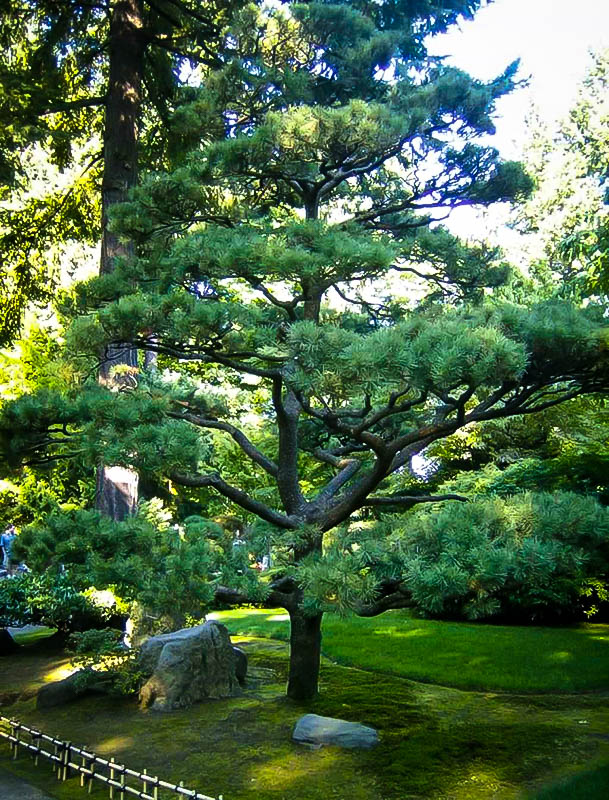How Do Pine Trees Reproduce

How do pine trees reproduce
A method is provided for asexually propagating pine trees, preferably loblolly pine, by vegatative propagation. According to this method, pine seedlings are hedged by severing the main stem and detaching the branches so that only one lateral branch is left intact and attached to the remaining main stem.
How do pine trees disperse their seeds?
In pines, and in many other cone bearing plants, it may take several years for the seed to mature following pollination. At the time of seed maturation the cone scales open and the seeds are dispersed by wind.
How can you tell if a pine tree is male or female?
Pines, like many other conifers, produce separate male (microsporangiate) and female (macrosporangiate) cones. In many pines, male and female cones are located on different branch types; females mainly on vertical apical branches and males on lateral branches located in the middle and lower parts of the crown.
Do pine trees produce seeds?
Most pine seeds are wind dispersed, with a prominent thin wing and a relatively small seed. The seeds of pines dispersed by animals have no wing and are much larger.
Do all pine trees need fire to reproduce?
Some trees are even fire dependent — such as many pine and eucalyptus trees — and only seed after a fire event when the soil is rich and there are no obstructions to sunlight in the lower canopy.
Do pine trees reproduce by cutting?
Growing conifers from cuttings isn't as easy as rooting most shrubs and flowers, but it can definitely be done. Plant several pine tree cuttings to increase your chances of success.
How often do pine trees produce pine cones?
Pine trees can be expected to have a bumper crop of pine cones every three to seven years. It is possible that changes in climate could have an effect on pine cone production and seed release, since they are influenced by temperature and moisture.
What are the seeds of a pine tree called?
Pine nuts come from pine cones. Only 20 varieties of pine tree worldwide produce cones with large enough pine nuts for harvesting.
Do pine trees have cones or spores?
Pine trees are conifers (cone bearing) and carry both male and female sporophylls on the same mature sporophyte. Therefore, they are monoecious plants. Like all gymnosperms, pines are heterosporous, generating two different types of spores: male microspores and female megaspores.
How tall is a 20 year old pine tree?
On a well drained, moist soil this species will outgrow any other evergreen that can be planted there, and a 20 year old tree can be 40 ft tall.
Do pine cones mean a tree is stressed?
But more pine cones can also mean the trees are producing more reproductive seeds as a way to deal with the stress of a dry or changing climate. It's a matter of survival: The tougher, drier the season, the stronger the urge for the trees to reproduce through seeds so the species can survive.
Why do pine trees only have cones at the top?
In conifers, the females are on top. The male cones are typically produced on the lower branches and the female cones on the top ones. This positioning helps to prevent self-fertilization because the sperm-containing pollen won't fall on the trees' own female cones.
What does a pine tree seed look like?
You'll often see seeds popping out of the scales. Most scales of a cone will have a seed or two
Do pine trees use flowers to reproduce?
Due to their membership in the gymnosperm plant class, pine trees do not blossom. Pine trees are distinct from other blooming plants because they lack an ovary that produces seeds in a flower. The seeds that develop following successful pollination are instead housed in cones.
Which part of a pine tree makes seeds?
Pine Cones Pine trees reproduce by producing seeds. Unlike deciduous trees, which produce seeds that are surrounded by fruit, pine seeds are located on scales of structures called cones (pine cones). Pine trees possess both male and female reproductive structures, or cones.
Why should you not burn pine?
Wood absorbs a lot of water and pine has a very high moisture content (some pine woods average at a 180% moisture content). Not only does this reduce the ease of ignition, but it also means this wood will create a lot of smoke and release a lot of carbon monoxide (a toxic compound to humans and animals) into your home.
Do forests grow back better after fire?
Forest fires remove dead trees Forest fires reduce much of these fallen trees to ash, which speeds up how quickly nutrients can return the soil. These nutrients are used by future trees to nourish themselves and grow.
Are some pine cones only opened by fire?
Serotinous cones. These “serotinous” cones can hang on a pine tree for years, long after the enclosed seeds mature. Only when a fire sweeps through, melting the resin, do these heat-dependent cones open up, releasing seeds that are then distributed by wind and gravity.
Why do pine trees split into two?
What typically happens is, the top of the tree is broken off, maybe in an ice-storm or high wind, and the top-most branch takes over to be the new tree top. Sometimes multiple limbs try to compete to be the new top. This causes a fork in the tree… a double top.
What causes a pine tree to split?
Rapid expansion of the inner bark can also occur as a result of other fluctuating growth conditions. Dry weather followed by wet weather can result in sudden growth that may cause splits. Avoiding fertilization late in the growing season can reduce the incidence of splits.












Post a Comment for "How Do Pine Trees Reproduce "